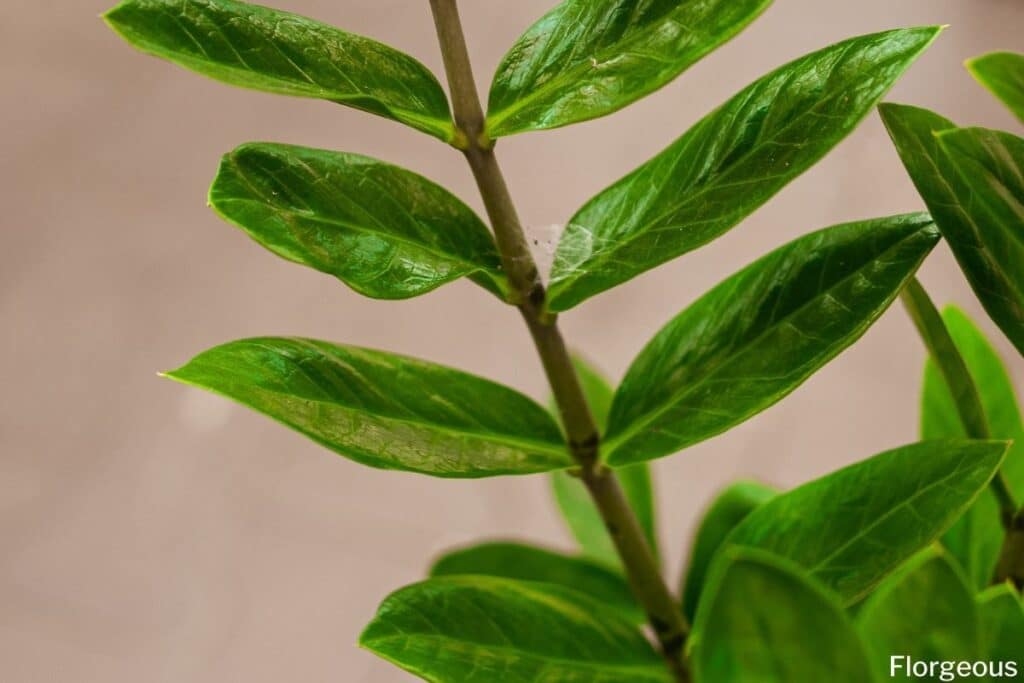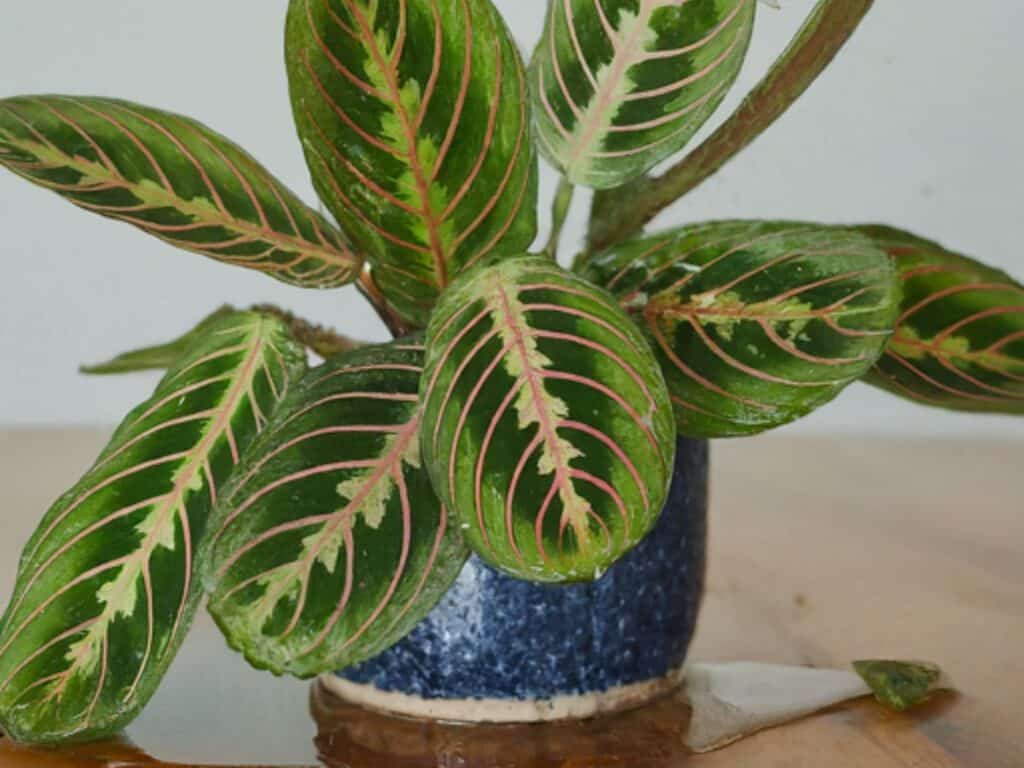Ever felt the heart-sink of seeing your ZZ plant’s lush leaves turning yellow and droopy? You’re not alone.
Often, the culprit is overwatering, a common issue for these easy-to-care-for houseplants. Overwatering can lead to root rot, a serious condition that can quickly take down your beloved plant.
But don’t worry, it’s not a lost cause. In this article, we’ll explore the signs of an overwatered ZZ plant, the reasons behind this issue, and most importantly, how to save your plant from this watery demise. So, let’s roll up our sleeves and dive into the world of ZZ plant care.
Identifying Overwatering in ZZ Plants
Yellowing Leaves
Commonly seen in an overwatered ZZ plant, yellowing leaves signal distress in your green friend. Rather than the lush, vibrant green it typically displays, overwatered ZZ plants exhibit leaves that turn yellow, even pale at times.
For example, you may well observe a generally healthy ZZ plant, denoted by the dark green, shiny leaves, suddenly show patches of yellow.
Mushy Stems and Leaves
Another unmistakable sign of overwatering in a ZZ plant is the presence of mushy stems and leaves. Unlike the firm and healthy texture they normally possess, overwatered ZZ plants present unusually soft, almost soggy, leaves and stems. Squeegeeing a small leaf or stem gently between your fingers alerts you if it’s lost its vigor and become mushy.
Root Rot Indicators
Once the roots of a ZZ plant start to rot, critical to its survival, the plant’s health begins to spiral. You may well notice a distinct, unpleasant smell emanating from the soil, one key indicator of root rot. Uprooting the plant carefully may well reveal browning or blackened roots, unlike the usual white or light tan healthy roots.
For example, healthy roots generally have a fresh, earthy scent and a firm, crisp texture, but those suffering from overwatering and subsequent rot feel soft and give off a noticeable rotting odor.
Immediate Steps to Rescue an Overwatered ZZ Plant

Stop Watering Immediately
After detecting signs of overwatering in your ZZ plant, your first course of action involves putting an end to watering. Continuing to add moisture could lead to further damage. Yellowing leaves and mushy stems, clear indicators of overwatering, require an immediate suspension of watering.
Remove Affected Soil and Roots
Subsequent to stopping the watering, it’s time to target affected soil and roots. Gently uproot the plant, discarding any soggy soil clinging to the root system.
Trim away brown, mushy roots, indicative of rot, using a sterile pair of scissors. This removal of damaged roots grants healthier ones the opportunity to absorb nutrients efficiently.
Allow the Plant to Dry
Lastly, after removal of affected soil and roots, ensure the plant dries completely. Position your ZZ plant in a well-ventilated area but avoid direct sunlight. Direct sunlight may well cause leaf burn whilst your plant is at its most vulnerable. It’s crucial for the plant to dry properly before any consideration of re-potting.
Long-Term Recovery Strategies
Adjusting Watering Schedules
Proper watering constitutes a major aspect of ZZ plant care. Hence, the need for adjusting your watering routines is evident. Implement the well famed ‘soak and dry’ method for this resilient plant. In other words, water thoroughly, then allow the soil to dry completely before watering again.
The number of times you water depends on factors like the season and your plant’s environment. Typically, water your ZZ plant once every two weeks during summer and once a month in winter.
Ensuring Proper Drainage
A crucial point to remember is the significance of sufficient drainage. Select a container with sufficient drainage holes to facilitate water flow. The rule is simple: The water that goes in must have a means of escape.
This avoids excess water remaining in the soil which may well lead to ill health for your plant. Consider using a porous material like terracotta for your pot. It can absorb additional moisture and reduce the chances of waterlogging.
Monitoring Soil Moisture Levels
Finally, monitoring soil moisture levels is beneficial. Investing in a soil moisture meter can be a practical solution. These handy tools can provide an accurate reading of the soil’s moisture content.
Avoid watering the plant if the meter indicates a reading towards the higher end. Remember, ZZ plants prefer underwatering to overwatering. This approach helps you keep tabs on the soil condition and wards off overwatering events, ensuring your ZZ plant enjoys a healthy life.
Preventing Overwatering in the Future

Moving past immediate rescue steps, let’s probe into long-term preventative measures. By adopting revised watering methods, choosing appropriate soil and pot, and learning to understand your plant’s needs, you’ll easily avoid future overwatering cases.
Choosing the Right Soil Mix
First on the key list, the soil mix. A fine-tuned soil mix significantly reduces the likelihood of overwatering. ZZ plants prefer a well-draining soil mix, such as a mixture of potting soil, perlite, and coarse sand.
It boosts soil drainage, providing a good mix of water retention and aeration for the roots. A mix incorporating these three components – the 40% potting soil, 30% perlite, and 30% coarse sand proportion has often shown excellent results.
Using Appropriate Pots
Next, comes the container selection. Remember, the type of pot can also contribute to overwatering. Best to opt for pots with adequate drainage holes.
These pots allow excess water to seep out, preventing pooling in the soil. Terracotta pots, renowned for their porous nature, absorb and release excess moisture, making them a fitting choice for ZZ plants.
Learning to Read Your Plant’s Needs
Finally yet importantly, understanding plant needs. ZZ plants aren’t thirsty plants, and the ‘soak and dry’ method works best. After complete drying of soil between watering sessions, it’s time for the next soak.
Feeling the soil for dampness can provide a general idea, but for more accuracy, consider using a soil moisture meter. This tool will help you nail the plant’s watering schedule, stepping away from the risk zone of overwatering.
Up next:







